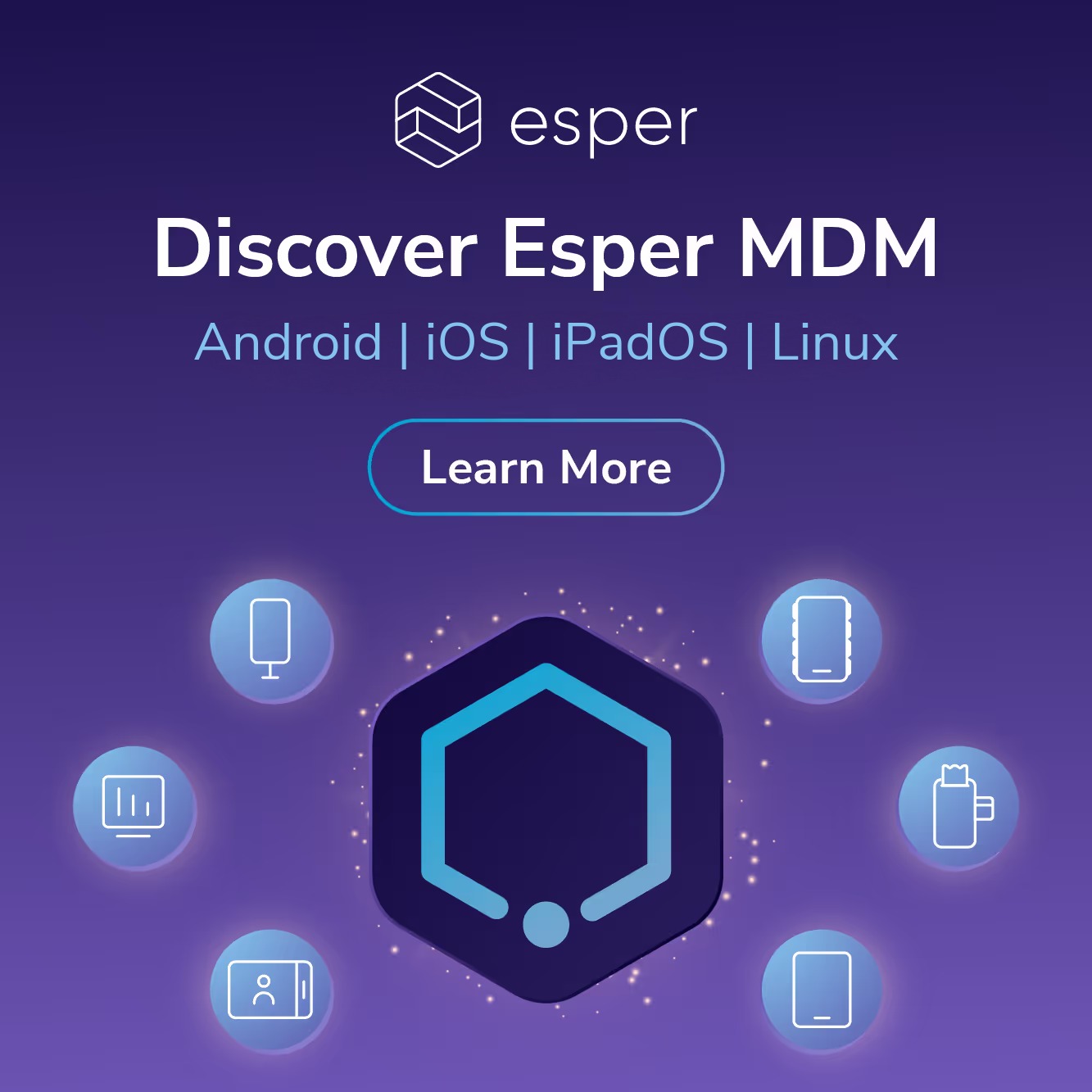One of the top reasons people come to Esper is our stellar app management. Not only can you deploy app updates in stages, but you can also show, hide, or run those apps in the background to customize the user experience.
Still, it’s not always easy to track when Google Play pushes out app updates. One day, your devices are acting normal, and then boom! They start acting up in the middle of a busy day because a large app update got pushed. Or worse — your field devices unexpectedly get updated over mobile data leading to a hefty and unexpected bill at the end of the month.
Wouldn’t it be great to have some control over these updates? That’s why we added App Update Mode, which is now available for Google Play Store apps.

With App Update Mode, you can choose when those apps get updated.
Let’s explore those options:

Default Update Mode
This mode works best for those devices that are used in the field, but returned to an active Wi-Fi connection and charging dock after use. Think hotel room tablets. The apps will update once all these boxes are checked:
- The device is connected to Wi-Fi.
- The device is charging.
- The device isn’t being used.
- The app isn’t running in the foreground.
These checks help preserve data usage, meaning you may even see cost savings over time.
High Priority Mode
It’s great to save on data, but what about those devices that don’t return to a dock at regular intervals? For those cases, you can set High Priority Mode, so that updates happen as soon as they’re available (as long as the device has a valid internet connection).
Just keep in mind that app updates may trigger at any time, so this mode isn’t ideal for organizations trying to save on mobile data usage.
Postpone Mode
Finally, Esper allows you to skip updates for 90 days. Want to hold off on updates for a while? Set it to Postpone Mode. Once the device boots up, you won’t be forced to sit through infinite loading screens as the apps update.
Using These Settings
Setting these modes is easy. In a blueprint, go to the Apps & Configuration section and set the Update Mode from the App List. You can also change update modes from the device details page. This way, you can target individual devices rather than those connected to a blueprint.
Remember that this feature will only work for Google Play applications running on GMS Android devices. For non-Google Play apps, you can upload and deploy directly from the console. This is especially useful for apps created in-house or by a third-party developer for your organization. For deploying updates, we offer a range of services, including blueprints and pipelines.
Explore this setting, and many others, in our blueprints documentation.
FAQ
Keep Exploring






.avif)










